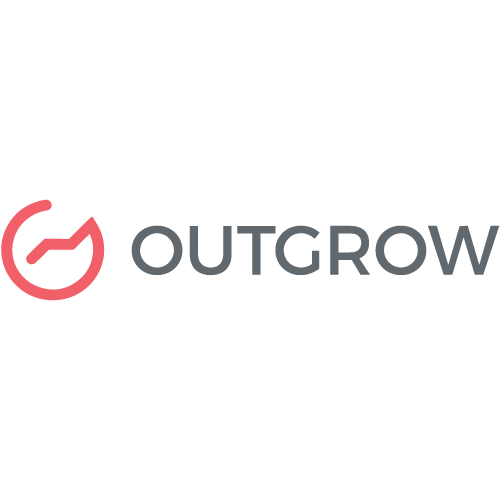Objective:
This resource aims to help you understand what contribution margin is, why it's a critical KPI to track to ensure your business grows profitability and how to use it to optimise your marketing campaign's Return On Ad Spend (ROAS)
What Is Contribution Margin?
The contribution margin is simply your revenue minus all the variable costs associated with making and fulfilling the sale.
Contribution Margin = Sales Revenue - Variable Costs
AKA: How much money you have left after making and fulfilling a sale that you can use to contribute to fixed costs.
How is Contribution Margin different from Gross Profit?
The difference between contribution margin and gross profit is that contribution margin takes into account all the costs associated with making and fulfilling a sale, where as gross profit only subtracts your COGS from your revenue.
Let's look at an example sale:
- You sell a product for: $110
- You pay $10 in sales tax
- Your bought the product for $30 (COGS)
Meaning you had a Gross Profit = $70
- But to get the sale you spent $22 on Facebook ads
- Your payment processer took: $2.94
- and you paid $12 in shipping
- Equals $36.94 of other costs
Meaning that your Contribution Margin = $33.06
So, as you can see, even though you had a gross profit of $70, you could only use $33.06 of this sale to contribute to other business costs like wages, rent, etc. Hence, the name "contribution margin."
This is why eCommerce brands with so many constant variable costs on every sale should measure their contribution margin, not just gross profit.
Why Measuring Contribution Margin is Crucial for eCommerce Brands.
"It's not about how much money you make; it's about how much money you get to keep that truly matters."
Understanding your contribution margin is vital for any business. Still, it's essential for eCommerce brands due to their numerous variable costs beyond just the cost of goods sold (COGS).
Remember the adage: if you don't measure it, you can't manage it.
This means that many eCommerce brands that only track sales income and not contribution margin end up running marketing campaigns and promotions that seem profitable on the surface but ultimately lose money on every sale. This puts them in a position where their sales are growing, but they constantly have to dip into savings or borrow more money and they can't work out why.
Measuring your Contribution Margin.
Measuring your contribution margin is not difficult.
Remember, it’s just your revenue minus your variable expenses.
What are Variable Expenses?
Variable costs are any cost that changes proportionately with how many sales you get.
Here are a few examples of the most common Variable costs in an eCommerce business:
This means that many eCommerce brands that only track sales income and not contribution margin end up running marketing campaigns and promotions that seem profitable on the surface but ultimately lose money on every sale. This puts them in a position where their sales are growing, but they constantly have to dip into savings or borrow more money and they can't work out why.
- COGS - The direct costs of producing or purchasing the products sold, including raw materials and manufacturing costs.
- Sale Taxes - GST, VAT or any other sales tax
- Ad Spend - Costs for pay-per-click (PPC) advertising, social media ads, etc
- Payment Processing - Payment gateways and credit card companies charge fees for each transaction.
- Shipping and handling - Costs associated with delivering products to customers.
- Packaging Materials - The costs for boxes, tape, labels, and other materials used to package products for shipping.
- Affiliate Commissions - Paying influencers and affiliates for sales
- Gifts & Loyalty Points - Cost of rewards customers get when they order from you, i.e. points, lollies, etc
- App Transaction Fees - Some apps charge a fee based on sales or usage
So, to measure your contribution margin, you simply calculate all your variable costs and subtract them from your revenue.
But to make this easier here are a few simple ways to start measuring and tracking your contribution margin.
Simple Contrbution Margin Sheet
The simplest way to track your contribution margin is to use a Google or Excel sheet and manually enter your revenue and variable costs.
If you want a copy of this sheet Template (Click Here)

Custom P&L Report
If you want a more detailed report to track your contribution margin, you can get your accountant or bookkeeper to put together a custom P&L report that moves your other variable costs from expenses to a section underneath your gross profit or, if needed, into COGS and creates a line item for your contribution margin.
Something I want to note because some Accountants will push back against this. But remeber that we are trying to make a management report, not a tax report!
Sadly, almost every financial reporting systems primary purpose is to tell us how much money we need to give to the government, not to help us run our business more efficiently.
Use reporting software to update a contribution margin report automatically.
Lastly, if you want to automate your contribution margin reports, you can use reporting software like DataBox, Fathom and others.
The benefit is that it requires no manual data entry, and most will automatically send you a report at the scheduled intervals. However, it does require some initial set up.
Contribution Margin Scenario Planing for Marketing Campaigns
One of the biggest benefits of understanding your contribution margin is that it allows you to plan and experiment with different scenarios before running campaigns. This gives you an idea of how different decisions impact your profitability and your campaign's breakeven ROAS.
Allowing you to set clear ROAS and KPIs for each of your campaigns, helping you quickly identify and cut unprofitable campaigns where your assumptions were wrong, and double down on profitable campaigns.
To aid you in this, we have created a free calculator that you can use:
How to use this Calculator
Step 1
The first step is to gather the following info and add it to the corresponding area in the calculator.
This will be used as the baseline data for your scenario testing.
- Your average order value (AOV) including taxes for your campaign
- Sales taxes (GST, VAT etc)
- Average COGS for your product
- What is the baseline ROAS
- Out of pocket Shipping & Handling
- Any Value-Addded Costs (Free gifts etc)
- Your average Transaction Fee percentage
Step 2
Lastly, adjust the variables and test the impact on your campaign profit margins.
When playing with your numbers, one thing to remember is the interactions each choice may have on other variables.
Here are a few examples of common questions for each variable:
- If we raise prices by 20%, what impact do we think this will have on ROAS
- If we cut our COGS by 5%, what is our new ROAS breakpoint
- If we changed our shipping prices, what impact will this have on our profit margins
- If we gave away a gift with every order and that increased our ROAS by 15%, would that be worth it
Conclusion
I hope you now better understand your contribution margins, how to track and use it to make your business more profitable.
If you have any questions about anything on this page, please don't hesitate to email us at hello@kozler.com.au or leave a comment below. We will be happy to help.
















